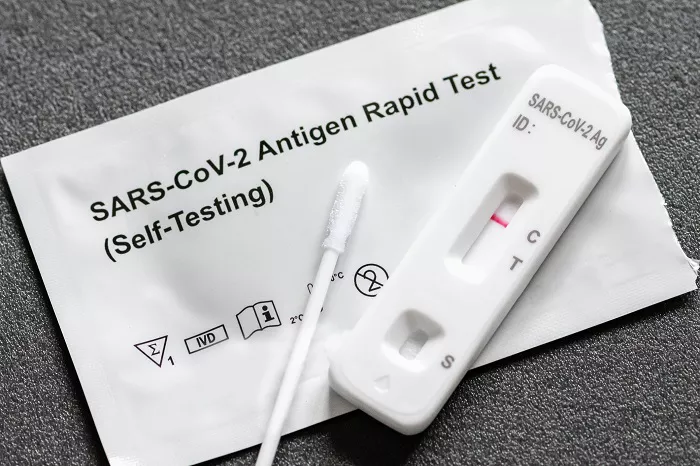Breast augmentation, also known as breast enlargement or augmentation mammoplasty, is one of the most popular cosmetic surgeries performed worldwide. The procedure is designed to enhance the size, shape, and symmetry of the breasts, often to boost self-esteem, restore breast volume after pregnancy or weight loss, or achieve a more balanced body proportion. With its ability to significantly alter one’s appearance and, in many cases, enhance confidence, breast augmentation has become a life-changing surgery for many women.
However, the decision to undergo breast augmentation is not one to be taken lightly. It involves careful consideration of various factors such as the type of implants, the surgical technique, the risks involved, and the post-surgery care required. In this article, we will dive deep into the details of breast augmentation, exploring everything from the types of implants to the recovery process, and answering key questions about this widely sought-after procedure.
The Basics of Breast Augmentation
Breast augmentation involves the use of breast implants or fat transfer to increase breast volume and improve the overall shape. This surgery can be performed for a variety of reasons. Some women opt for it for aesthetic purposes, while others may seek to restore volume lost after pregnancy or to correct asymmetry. Breast augmentation can have a significant emotional and physical impact, helping women feel more comfortable in their bodies and improving their self-confidence.
Why Do People Choose Breast Augmentation?
Women choose to undergo breast augmentation for a wide range of reasons. The most common motivations include:
Enhancing breast size: Women who feel their breasts are too small or disproportionate to their body frame may opt for augmentation.
Restoring volume after pregnancy or weight loss: Pregnancy, breastfeeding, or significant weight fluctuations can cause the breasts to lose volume or firmness. Breast augmentation can restore or enhance their appearance.
Addressing breast asymmetry: Some women have uneven breasts, and breast augmentation can help create a more balanced and symmetrical look.
Boosting self-confidence: Many women feel more confident and feminine with a breast shape that matches their aesthetic desires.
Breast augmentation surgery can significantly improve a person’s appearance, but it also carries potential risks and complications that should be carefully considered before making a decision.
Types of Breast Implants
One of the most important decisions in breast augmentation is choosing the type of implant that best suits the patient’s body and goals. Implants come in various shapes, sizes, and materials, each with its own set of advantages and disadvantages. The two most common types of breast implants are saline and silicone.
1. Saline Implants
Saline implants are filled with a sterile saltwater solution and are inserted into the breast pocket empty, then filled once in place. These implants are adjustable in size and provide a firm feel. The main advantage of saline implants is that if the implant leaks, the body will naturally absorb the saline solution without causing harm. However, saline implants may have a slightly less natural feel compared to silicone implants, especially in women with less breast tissue.
2. Silicone Implants
Silicone implants are filled with a gel-like substance that closely mimics the feel of natural breast tissue. These implants tend to be more popular due to their natural look and feel, and they are less likely to wrinkle or ripple under the skin. Silicone implants require a slightly larger incision for insertion, and patients need to monitor them more closely because, if a rupture occurs, it is less obvious. Regular check-ups are necessary to ensure the implants are intact.
3. Gummy Bear Implants
A newer type of silicone implant, gummy bear implants are made from a cohesive gel that holds its shape even if the implant shell is damaged. These implants are highly durable and offer a more natural look and feel. The cohesive gel inside gummy bear implants makes them firmer, and they are often chosen by women looking for a more pronounced breast shape.
4. Fat Transfer Breast Augmentation
Fat transfer breast augmentation is a less invasive alternative that involves liposuction to remove fat from other parts of the body, such as the abdomen, thighs, or flanks. This fat is then purified and injected into the breasts to increase their size. The advantage of fat transfer is that it provides a completely natural result without the use of implants. However, the amount of volume that can be added is limited by the amount of fat available for transfer, and some of the injected fat may be absorbed by the body over time.
The Surgical Procedure
Breast augmentation is typically performed under general anesthesia and takes about one to two hours to complete. The exact procedure can vary depending on the type of implants used and the surgical technique chosen. The incision can be made in several places, including:
Inframammary fold: Under the breast, where the scar is easily hidden by the natural breast crease.
Periareolar: Around the nipple, which may be more visible in some cases but offers easy access to the breast tissue.
Transaxillary: In the armpit, leaving no visible scars on the breast itself but potentially resulting in more complex surgery.
Transumbilical: Through the belly button, though this method is less common and may not be suitable for all patients.
Once the incision is made, the surgeon will create a pocket in the breast tissue to insert the implant. The implant can be placed either under the breast tissue or under the chest muscle, depending on the patient’s anatomy and desired outcome. After the implant is positioned, the incision is closed, and the patient is monitored as they wake up from anesthesia.
Recovery Process
The recovery time after breast augmentation varies from person to person, but most women can expect to return to light activities within a few days. The initial recovery phase can be uncomfortable, with swelling, bruising, and soreness around the breast area. Pain medications are typically prescribed to manage discomfort during the first few days.
For the first few weeks, it is important to avoid heavy lifting and strenuous activities to ensure proper healing. Wearing a supportive surgical bra is also recommended to help reduce swelling and provide support to the newly augmented breasts. It’s important to follow the surgeon’s post-operative care instructions carefully to avoid complications and promote faster healing.
Long-Term Recovery
After the first few weeks, many women feel well enough to resume most of their normal activities. However, the full recovery process may take several months. During this time, the breasts will settle into their final position, and the scars will begin to fade. Over the course of a year or more, the scars will continue to improve, and the final results of the surgery will become more apparent.
It is important for patients to keep regular follow-up appointments with their surgeon to monitor the healing process and ensure that the implants are functioning as expected. If silicone implants are used, routine imaging tests such as an MRI may be recommended to check for ruptures or leaks.
Risks and Complications
While breast augmentation is generally safe, as with any surgery, there are potential risks and complications. These can include:
Infection: Although rare, infections can occur after surgery, and antibiotics may be required to treat them.
Implant rupture: Implants can rupture due to injury or gradual wear, especially if they are silicone-based. Regular monitoring can help detect ruptures early.
Capsular contracture: This occurs when the body’s immune system forms a tight capsule around the implant, causing the breast to feel hard and potentially distort its shape.
Changes in nipple sensitivity: Some women experience changes in nipple sensation after surgery, which may be temporary or, in rare cases, permanent.
Scarring: Although breast augmentation is typically performed with minimal scarring, the surgical incisions may leave permanent scars, depending on the technique used.
It’s important to have a thorough consultation with a board-certified surgeon who can provide detailed information about the risks and help you make an informed decision.
Conclusion
Breast augmentation can be a life-changing procedure for women looking to enhance the size, shape, or symmetry of their breasts. Whether for aesthetic reasons, post-pregnancy restoration, or correcting asymmetry, the decision to undergo breast augmentation requires careful consideration of the implant options, surgical techniques, and potential risks involved. Understanding the procedure, the different implant types, the recovery process, and the associated risks will help you make a more informed decision that aligns with your personal goals and desires.
Ultimately, breast augmentation can provide a long-lasting transformation, helping women achieve a body they feel more confident and comfortable in. If you are considering breast augmentation, it is essential to consult with a skilled and experienced surgeon who can guide you through the process and help you achieve the best possible outcome.
Related Topics































